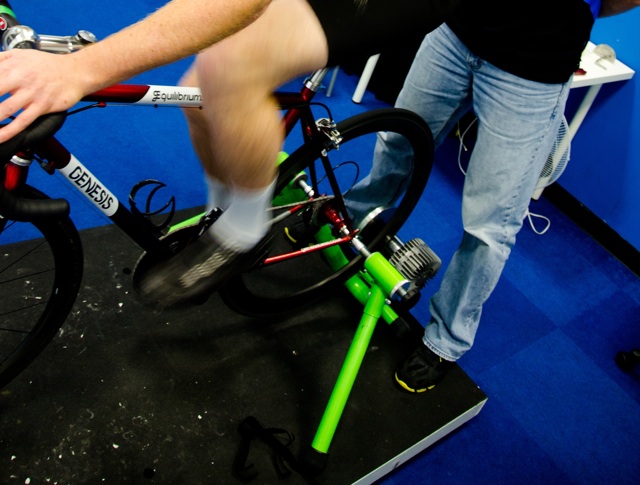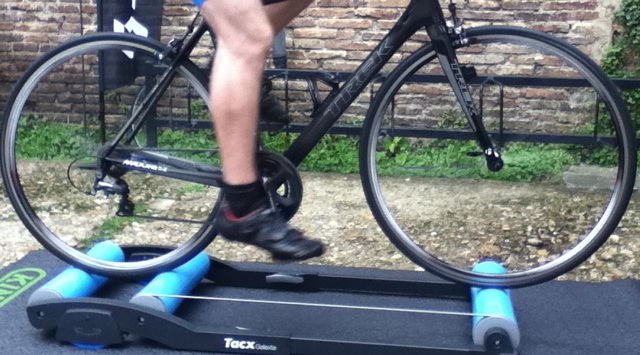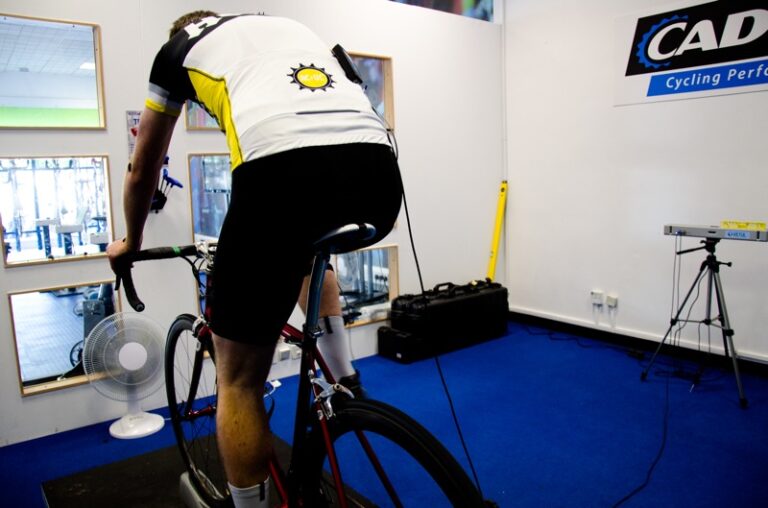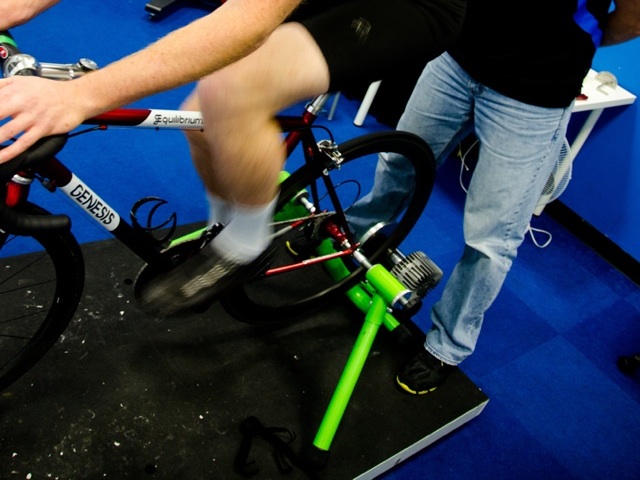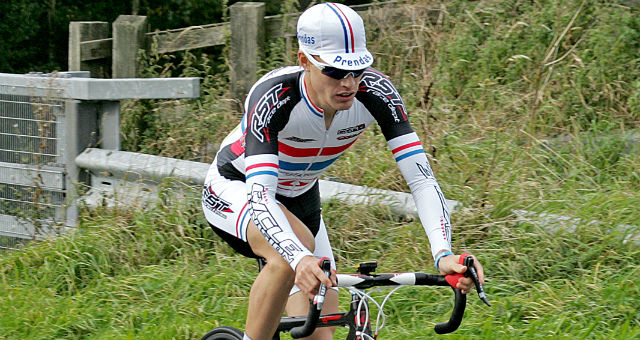If you know that leg and core weakness is something you want to work on, it can be frustrating if focussed drills or muscular ‘overload’ techniques such as seated hills cause pain or problems.
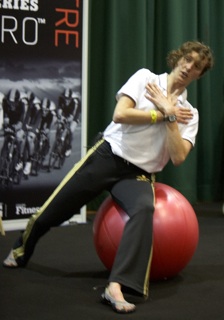 Often the short term solution is to avoid the hills or work with smaller gears – one of the reasons for the increasing popularity of compact and triple chain sets. This will help you get over the hills but it will not make you any stronger, so a better long-term solution is to find the source of the problem and be proactive about trying to change it.
Often the short term solution is to avoid the hills or work with smaller gears – one of the reasons for the increasing popularity of compact and triple chain sets. This will help you get over the hills but it will not make you any stronger, so a better long-term solution is to find the source of the problem and be proactive about trying to change it.
Flexibility, or rather inflexibility, is often a problem. The harder you work with your legs the more likely tight areas are going to start to show up as a limiting factor on the bike. The hamstrings at the back of the thigh are probably the most commonly tight muscle affecting the whole biomechanical chain for a cyclist. Shortened hamstrings pull on the base of the pelvis and flatten, ‘flex’, or ‘round’ the lower back, taking it into a progressively uncomfortable and unfavourable position.
It may not be immediately obvious that this is the problem, as you might just feel uncomfortable in your lower back, or notice a sense of weakness in your legs. You may start fiddling with your position by shortening the reach or reducing the drop from saddle to bars to try to get comfortable. In a worst case scenario if lumbar discs and nerves are affected weakness and pain can progress into the legs on one or both sides. A targeted, specific stretch for the hamstrings at the knee can be highly effective in lengthening these muscles and alleviating the problem, enabling you to get into a better position on the bike and prevent more serious issues developing.
As well as muscle tightness or stiffness in the spine, weakness in the core can be an issue. The deep stomach muscles work to stabilise the pelvis and back when you bend forwards on the bike and if these are weak, or relatively inactive, problems will start to show up when the load increases. The deep core muscles become more important uphill or when you push hard as they work to maintain joint alignment against an increase in load. Where an inactive core is less of a problem if you are pedalling fairly easily on the flat, it might become apparent at higher intensities or when the road goes up. The result can be that your back becomes unstable and your knees may start to roll in or out rather than maintain a ‘straight’ driving position.
Often there are elements of tightness and weakness collaborating together to cause you problems so a combination of stretching the tight areas and strengthening the weak areas can really help you get to the root of the problem. The challenging thing about this approach for many riders is that it means doing something off the bike to improve performance on it – an idea that still represents a cognitive leap for some. However, if you are one of those people who suffers aches and pains when you ride hard or uphill this really is the best option and it will pay dividends.
As you begin to get more flexible and stronger off the bike the final stage is to integrate this strength into your cycling again, by reintroducing some strengthening drills on the bike. This is essential to teach your body a new way of pedalling, to break old habits and to transfer your new found muscle balance into improved cycling strength and power.

